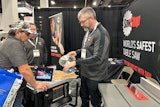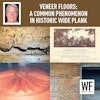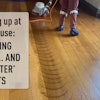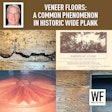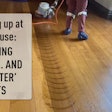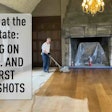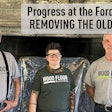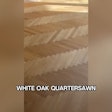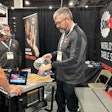Fact, fiction or opinion: In writing and evaluating reports, I am often faced with determining whether something is fact or fiction, or just an opinion. Some "facts," like my "grits come from grit palm" statement from last week's blog, are easy to verify or disprove with a simple web search. On the other hand, we've all faced an unusual name for a product or material, and "grit palm" could be someone's proprietary name for their material.
"The floor is cupped because of subfloor moisture." Is that fact, fiction, or opinion? In my opinion, it could be any of those. In fact, it could be any of those. One of our jobs as an inspector is to collect, analyze, interpret and present data such that we separate fact from fiction. Done correctly, our opinion doesn't really enter into things. Because if you have an opinion, I might have a different opinion.
How about "Using a XXXX moisture meter, the floor was 8% MC, the subflooring was 14% MC and the slab was 80% RH. This exceeds industry standards. The cupping is therefore the result of excessive subfloor moisture." Which of this is fact, fiction and opinion? First, the meter could have read 8% and 14%, but are they actually the MC of the materials? The numbers could easily be false because of the way meters work and how we use them.
Then I dare say that industry standards are opinions. In the opinion of the industry, if you do/don't do this, you will have problems. Some of us have talked about this many times in the past: Just because you violate industry standards doesn't mean your floor will fail. But it can be a fact that you followed industry standards or not.
Then the last statement, "Cupping is the result of…" could be fact, fiction or opinion. If it's based solely on an industry standard, it is based on opinion (and we inspectors certainly have our opinions). Actually, if it is based on the 8% and 14% numbers, that could be opinion also. A board cups as a result of a top-to-bottom difference in moisture, or possibly, as Howard recently clarified, because of differential movement in a board as it changes moisture content. How about if the MC of the floor and subflooring were still 8% and 14% two months after the floor was disassembled and leaned against the wall? How does that change our facts and opinions? [See Part 2 of this post here.]











